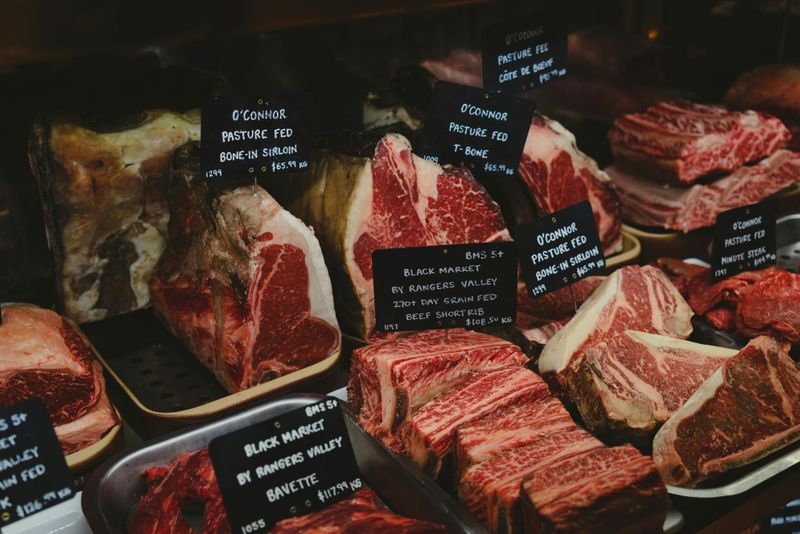10 Products That Got So Expensive That Americans Are Starting to Realize They Should Just Stop Buying Them

Sticker shock used to be a rare surprise; now it’s a weekly ritual at the checkout line. Americans are crunching the math and realizing some “everyday” buys are stealth budget busters.
The good news? There are smarter swaps that won’t feel like sacrifice. Let’s break down ten items that ballooned in price and the savvy moves that keep your wallet calm.
1. Fast-food value meals

Remember when a drive-thru combo felt like a cheap, cheerful splurge? That nostalgia fades when a “value” meal rivals a casual-dining bill, especially after upsized drinks, surcharges, and delivery fees. Markups, labor costs, and app-only “deals” that push you into pricier bundles have turned quick-service into slow-burn wallet drain.
Instead, decouple the combo. Order a la carte, skip the soda, or share large fries and you’ll shave dollars without losing convenience. Grocery-store rotisserie chickens, bagged salads, or sheet-pan dinners beat the per-person cost—and you control the portions and nutrition.
When cravings strike, chase limited-time offers carefully; sometimes the base sandwich is the real deal. Loyalty points help if you’re disciplined. But if the bill keeps creeping past $12 to $15 per person, that’s your cue to pivot to home-prepped quick bites.
2. Premium coffee drinks

Foamy art and seasonal syrups are delightful, but the math is brutal: $6 lattes add up to a utility bill shocker. Milk alternatives, extra shots, and “venti tax” creep inflate the tab far beyond beans and water. Per-cup costs soar when you tack on delivery or mobile fees.
Level up at home with a burr grinder, a sturdy French press or AeroPress, and a milk frother. Buy beans on subscription, learn a simple syrup recipe, and you’ll replicate café flavors for under a dollar a cup. Weekend café runs become a treat, not a habit.
If you love the café vibe, order the smallest size, skip extras, or go for drip with a splash of cream. Rewards programs are decent, but only if you avoid add-ons. Coffee should wake you up—not your credit card.
3. Brand-name medications

That familiar logo on the box feels reassuring—until you learn the active ingredient is identical to the generic at half the price or less. Marketing budgets, not molecules, drive the premium. Even over-the-counter pain relievers, allergy meds, and acid reducers can cost dramatically more for the same dosage.
Check the Drug Facts label: match the active ingredient, strength, and form. Generics meet the same FDA standards for safety and effectiveness, and pharmacies often run buy-one-get-one deals. For prescriptions, ask your doctor to write “generic allowed” and compare prices with discount cards.
Warehouse clubs sell large-count generics at rock-bottom per-pill costs. For ongoing conditions, mail-order pharmacy can cut recurring expenses. Splurge on brand only when a filler, dye, or delivery mechanism makes a clinically meaningful difference; otherwise, your co-pay deserves a diet.
4. Dining out

Restaurant menus have inflated like sourdough—rising prices, shrinkier portions, and sneaky service fees. Even midweek dinners can eclipse $25 to $40 per person before tax and tip. Dynamic pricing, elevated labor costs, and supply volatility mean the “date night” line item became a monthly budget villain.
Shift to strategic dining. Hit lunch specials, split large entrees, or savor appetizers and dessert instead of full mains. BYOB spots or places with no corkage slay drink markups, and neighborhood gems often beat chain prices without the surcharge circus.
At home, theme nights—taco bars, pasta feasts, dumpling parties—turn budget cooking into a social win. If you’re loyal to a favorite spot, track promotions and off-peak discounts. Restaurants are still a joy, but letting habit steer the wheel is how checks start driving you.
5. Single-serve bottled water

Paying a premium for what flows nearly free from the tap is a modern paradox. Per-gallon costs for single bottles can crush the price of gasoline, and the plastic waste stacks up guilt along with charges. Branding, not hydration, drives the margin.
Invest in a durable reusable bottle and a solid filter—pitcher, faucet-mounted, or under-sink. Most tap systems meet strict standards, and filters neutralize taste quirks. Keep a bottle in your bag, car, and office to dodge impulse buys at vending machines and gas stations.
For events or guests, buy multi-gallon jugs with pumps, not pallets of singles. Sparkling cravings? A countertop carbonator with refillable cylinders ends the $1.99-per-bottle treadmill. Water should be refreshing and responsible—both to the planet and your pocket.
6. Cable TV

Channel bundles stuffed with networks you never watch, creeping fees, and equipment rentals turned cable into the land of locked-in bills. Promotions expire, prices leap, and retention calls become endurance sports. Meanwhile, streaming exists—flexible, cancellable, and less hardware-heavy.
Cut the cord thoughtfully. Tally what you actually watch and swap in a few targeted services. Rotate platforms monthly, share within a household, and layer a free over-the-air antenna for news and sports. Cloud DVR alternatives and library apps fill gaps without contract drama.
Beware subscription creep; multiple niche apps can recreate cable prices. Use a tracker, set calendar reminders for trials, and pause services between must-watch shows. Entertainment should feel like a choice, not a bill you lost an argument to years ago.
7. Major appliances

Sticker prices climbed while lifespans shrank, thanks to complex electronics and pricey proprietary parts. That “smart” fridge might be clever, but repair bills and out-of-warranty nightmares can turn cool features into hot regrets. Delivery, haul-away, and installation tack on hidden hundreds.
Buy for durability, not gimmicks. Research reliability surveys, prioritize mechanical simplicity, and skip fragile touch panels where knobs will do. Consider scratch-and-dent models with full warranties, and pay with a card that extends coverage.
Before replacing, price out repairs—independent technicians and refurbished boards can save big. Energy Star models cut utility costs, but calculate payback periods honestly. For washers and dryers, mid-range often beats luxury lines on longevity. In the appliance aisle, boring is beautiful—and blessedly cheaper over time.
8. Premium cuts of meat

Ribeyes and tenderloins eat your budget before you take a bite. Supply shocks, feed costs, and restaurant demand sent prime cuts skyward, turning steak night into a math test. Paying top dollar doesn’t guarantee flavor if you rush the cook or skip proper rest.
Go strategic: choose chuck, sirloin tip, pork shoulder, whole chickens, or bone-in cuts. Marinating, reverse searing, and low-and-slow methods unlock tenderness at half the price. Butcher bulk buys, then portion and freeze; you’ll pay wholesale instead of panic retail.
Stretch meat with bean-heavy chilis, hearty stews, and stir-fries piled with vegetables. For steak cravings, flank or skirt with a smart marinade sings on the grill. Save prime cuts for special occasions—your taste buds won’t notice, but your bank account will applaud.
9. Travel/Vacation packages

All-inclusive deals promise simplicity, then bury extras in fine print: resort fees, baggage, transfers, and “optional” excursions. Dynamic pricing spikes during school breaks and popular seasons, making bundled bargains feel less, well, bargain-y. Convenience costs—sometimes more than piecing a trip yourself.
Start by pricing components individually with flight alerts and flexible dates. Mix budget airlines with reliable ground transport, book apartments with kitchens, and prioritize walkable neighborhoods. Loyalty points and companion tickets can crush airfare if you plan ahead.
Travel off-peak, pack light, and skip auto-upgrades. Local markets and street eats deliver culture without the prix fixe surcharge. If a package truly saves, lock it—but verify cancellation terms and total fees. The best souvenir is coming home without a balance hangover.
10. Snacks, convenience-items, indulgences

Those grab-and-go treats at convenience stores quietly siphon cash—tiny portions, premium branding, and precious packaging. A protein bar here, an energy drink there, and suddenly you’ve spent dinner money on “just snacks.” Per-ounce prices are brutal compared with grocery bulk buys.
Stock a snack kit: nuts, jerky, fruit, yogurt, and homemade trail mix from warehouse-club ingredients. Brew iced tea at home, decant into reusable bottles, and keep it cold. When hunger is managed, impulse purchases lose their siren song.
For indulgence, plan it. Bake brownies, batch popcorn with real butter, or grab a full-size chocolate bar instead of minis. Smart stashes at home and in the car save money and time, proving that convenience doesn’t need a 300% markup to feel satisfying.

Comments
Loading…